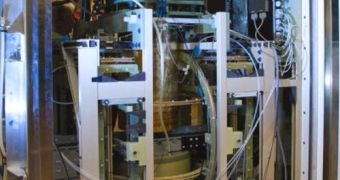For a long time, more than anyone cares to remember, passengers in United States airports have been forbidden to carry toothpaste, shampoo and other types of liquids aboard jets. Authorities feared that terrorists and other ill-intended people might try to sneak various compounds on air liners, and then mix these components together to form bombs that could explode in mid-flight. But researchers came up with a solution a few years ago called the MagViz.
Physicists at the US Department of Energy's (DOE) Los Alamos National Laboratory (LANL) developed a magnetic resonance imaging (MRI) technology-based machine that could peer through various types of containers, and identify the chemical composition of liquids within. The issue was that the machine was so efficient at what it did, that it triggered a lot of false-positive signals. Therefore, the experts took it back, and started fine-tuning it, so as to become suitable for mass-transit, public applications. MagViz stands for the Magnetic Vision Innovative Prototype.
A new model of the device was constructed and tested, with funding secured from the Department of Homeland Security (DHS) Science and Technology Directorate (S&T). The instrument was tested late last year at the Albuquerque International Airport, where investigators prepared a wide array of chemicals to be screened by the machine. The confidence and funds that were placed in the MagViz did not disappoint, as evidenced by the fact that nothing got through the new defenses. The MRI device was able to detect the full range of components that could have been assembled into a liquid bomb aboard a plane.
In using the new system, screening experts from the Transportation Security Administration (TSA) were ecstatic at the fact that all threats, or possible threats, were highlighted on a computer screen through circles and various colors. Having such instruments at their disposal could make their lives a lot easier, they said. “You'd have to wait in a separate line, but at least you could bring along that large bottle of H20,” MagViz Program Manager Stephen Surko says. He adds that the system is now being further fine-tuned, to account for differences that occur within the same class of liquids, as, for example, temperatures and pH levels.

 14 DAY TRIAL //
14 DAY TRIAL //